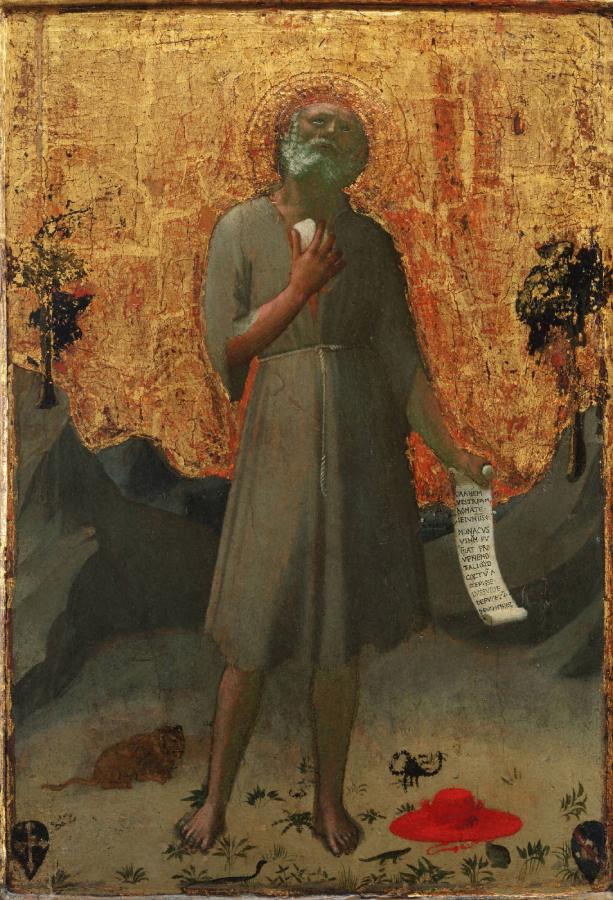Angelico, Fra (c.1395-1455)
San Girolamo penitente (The Penitent Saint Jerome)
1419–1420
Tempera on wood panel, 56.5 x 41.2 cm
Princeton University Art Museum, Princeton
Although some scholars attribute this painting to the Florentine artists Masolino, Masaccio, and Giovanni Toscani, most favor the young Fra Angelico. Early restorations and repainting complicate the question, yet the pose is audacious; an inventive master imagined the foreshortened head gazing upward. Saint Jerome (A.D. 340/2–420) appealed to Renaissance humanists as the translator of parts of the Bible from Hebrew and Greek into Latin. He is shown during his retreat in the Syrian Desert to expiate his earlier life and love of Greco-Roman culture. Dressed as a hermit, he beats his breast with a rock. The lion, from whose foot he removed a thorn, is his companion in the wilderness, along with a snake, scorpion, and lizard. The coats of arms led to speculation that the picture commemorates a marriage. The panel may more convincingly be linked with the Hieronymite Order, whose house in Fiesole, near Florence, was founded in 1406. This painting, which retains most of its original frame molding and iron hanging-ring, depicts Saint Jerome, face upturned, standing in the desert. In one hand he holds a scroll, and with the other he beats his chest with a rock. The strikingly innovative pose suggests an exceptional artist. Many attributions have been suggested, but a majority of recent scholars prefer the Florentine friar and artist Fra Angelico. In 1984, when the painting was undergoing restoration, it was discovered that the work had been heavily restored in the distant past, with repainting on the saint’s face, left arm, and both legs; his right forearm remains the only unrestored part of his anatomy. Here, the underpainting of terra verde is a light green color, which is what Fra Angelico used in his autograph works. The painting’s distinguished ownership history includes direct descendants of the early Renaissance painter Taddeo Gaddi, the literary couple Robert and Elizabeth Barrett Browning, and the Princeton professor and Art Museum director Frank Jewett Mather Jr. Describing the painting in his poem “Old Pictures in Florence,” Browning wrote: “Some Jerome that seeks the heaven with a sad eye.” (PUAM)
See also:
• Browning, Elizabeth Barrett (1806-1861) | Browning, Robert (1812-1889)
